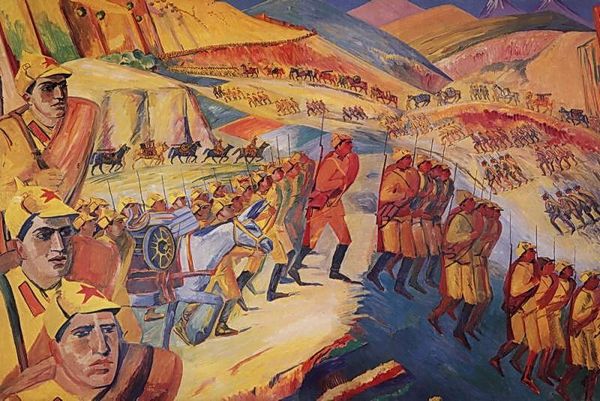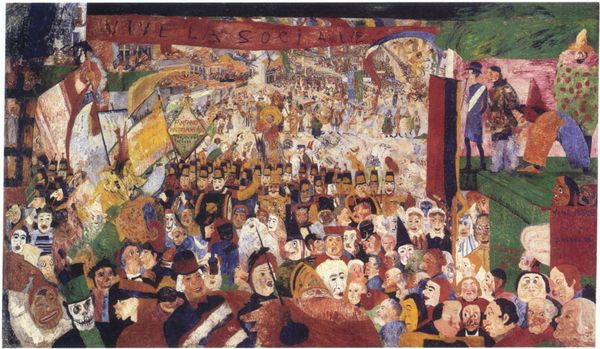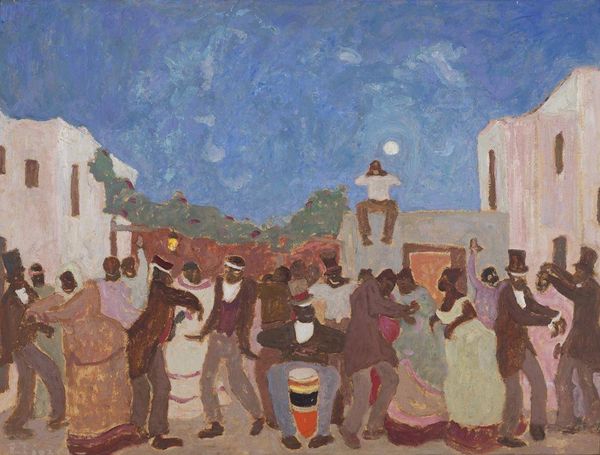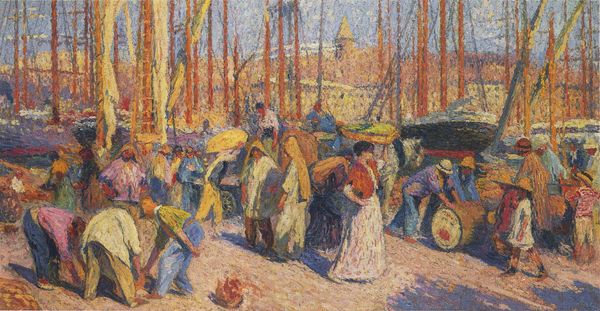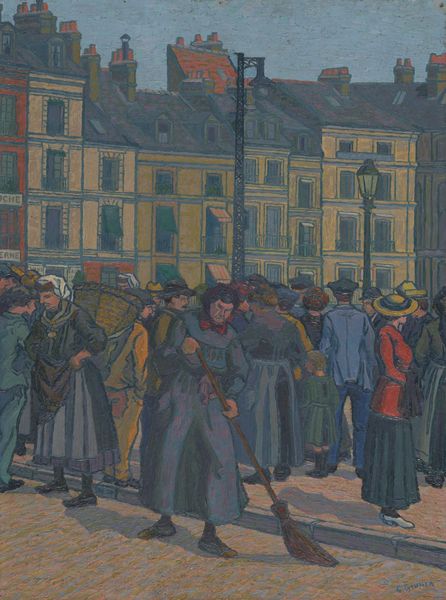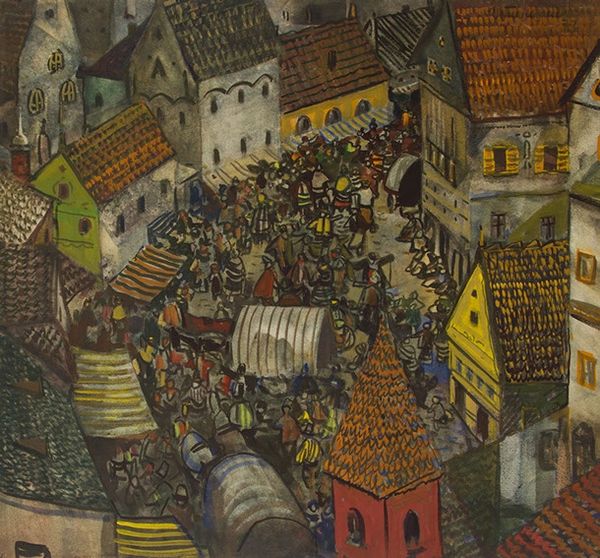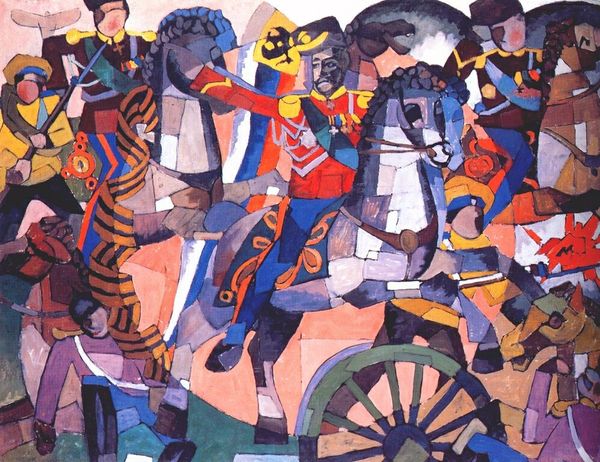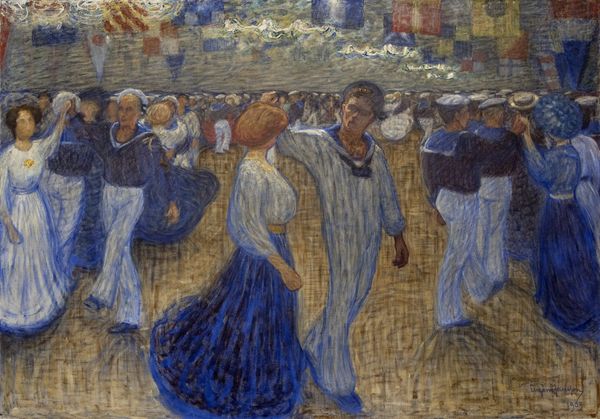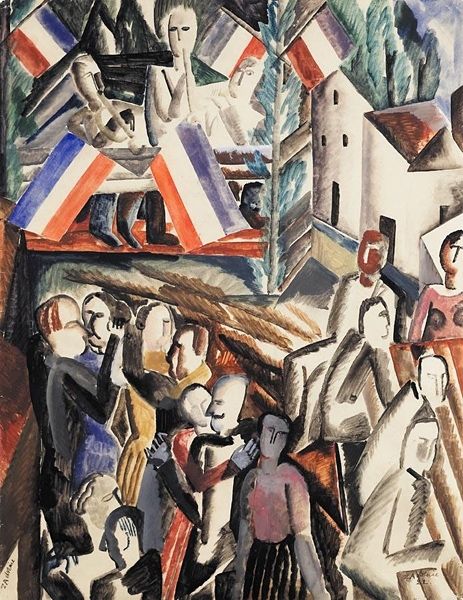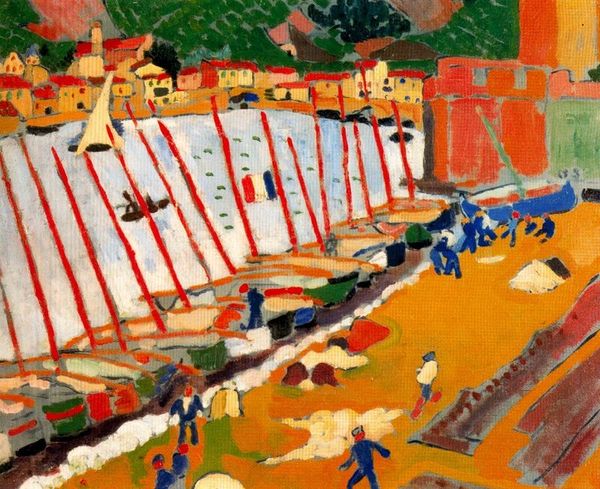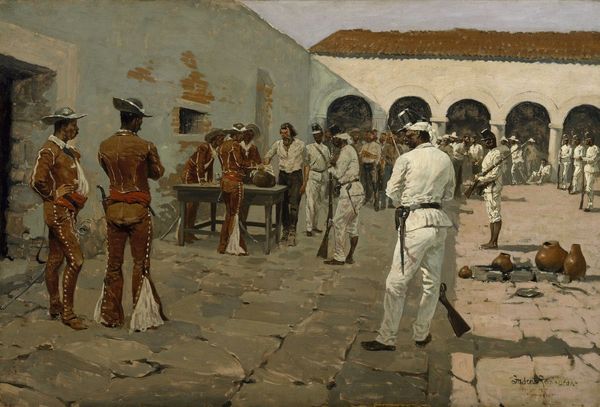
Copyright: Public domain US
Editor: This is Grace Cossington Smith's "Reinforcements: Troops Marching," painted in 1917 using oil paint. The colours are unexpectedly cheerful, almost celebratory, for a painting made during the First World War. What do you see in it, viewed through a historical lens? Curator: The painting offers an intriguing perspective on the public image of war. Notice how Cossington Smith doesn’t focus on the battlefield. Instead, she presents a scene of public support and mobilization. Consider the social pressure at the time to conform and support the war effort. Do you think the artist is perhaps subtly commenting on this enforced patriotism through the bright colours? Editor: That's a great point. I hadn't considered the social context quite that deeply. The naivete and bright colours could actually highlight the pressure to see the war as a glorious thing, even if the reality was quite different. I'm struck by how the flags and the marching soldiers are almost like a pattern repeated. Curator: Exactly. The repeated imagery, almost like a propaganda poster, hints at the institutional promotion of war. Think about the role of the state in shaping public opinion. The artist offers this very personal viewpoint against the march, not only of soldiers but the inexorable force of cultural norms. What do you feel is missing, visually or conceptually? Editor: I'm missing the sense of fear or loss that I'd expect. Now I realize its absence speaks volumes. I wonder if Cossington Smith was making a conscious statement about the role of art itself in either promoting or questioning societal narratives? Curator: Precisely! It’s in these subtle visual choices, these absences, that the artist’s perspective and the socio-political dynamics of the time reveal themselves. Understanding these factors adds another dimension to experiencing this painting. Editor: This discussion really changed how I perceive the artwork. I see now the complexity hidden within such a seemingly straightforward image. Curator: And hopefully it demonstrates how historical context is critical in our perception of visual art, to reveal the messages in a work of art that go far beyond its literal subject matter.
Comments
No comments
Be the first to comment and join the conversation on the ultimate creative platform.

